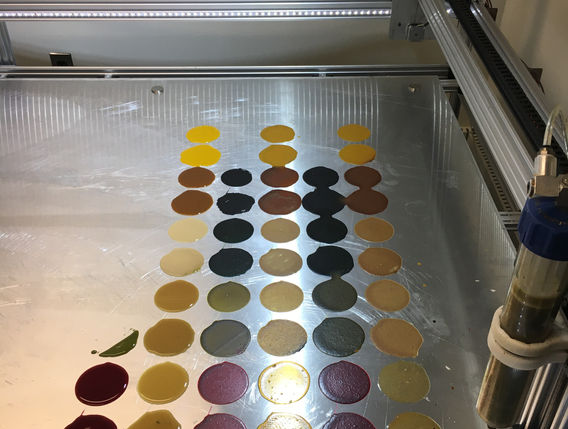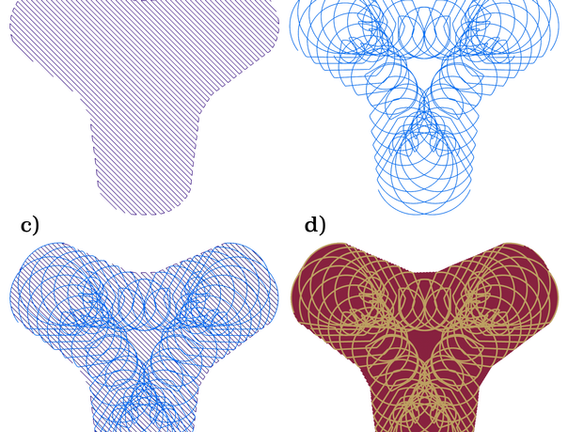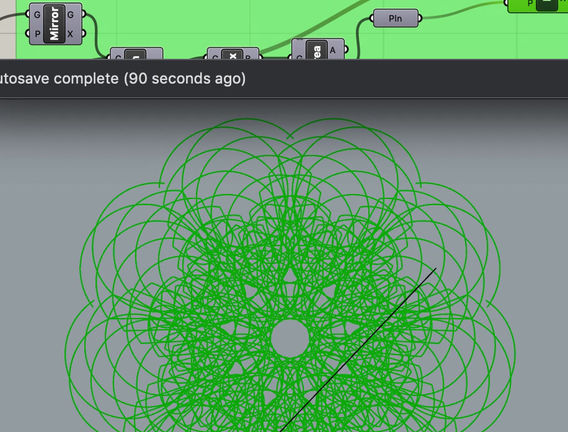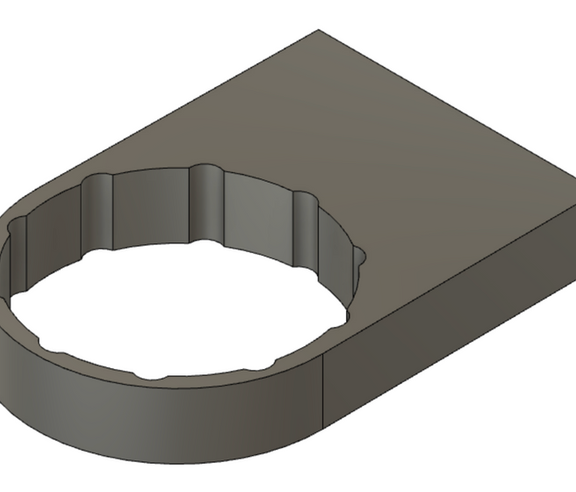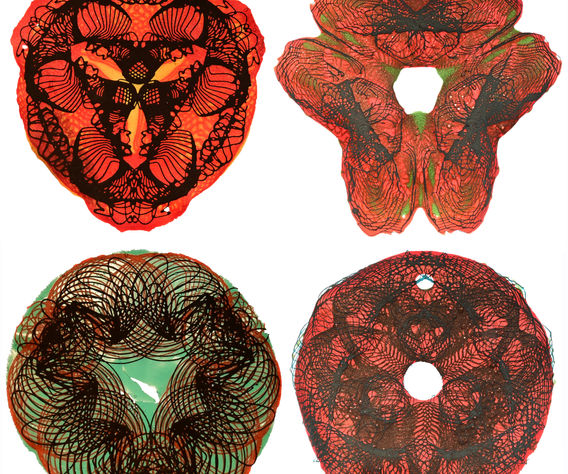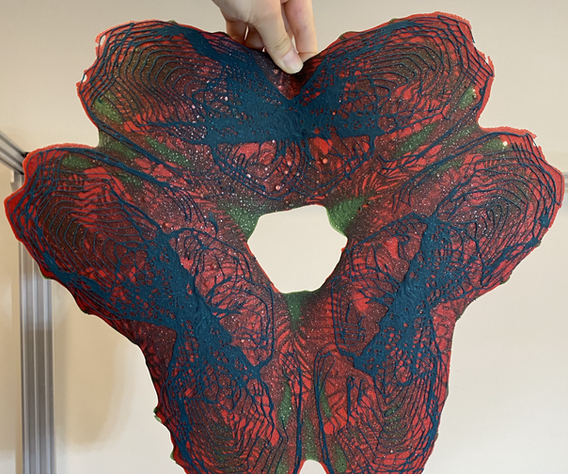
Enhancing Biopolymer Fabrication
Undergraduate Research in the Mediated Matter Group, MIT Media Lab
Project Overview
For this project, I'm exploring the 3D printing of biopolymers, renewable and biodegradable materials with applications in architecture, art, and sustainable design. The goal of my research is to improve the fabrication methods of these materials and explore their potential to replace plastic in packaging and construction. Working at the intersection of mechanical engineering, materials science, and art, I intend to refine methods that lead to more widespread use of multi-material printing and biopolymers in industry.
Click on the buttons to jump to a particular element of my research!

Fermentation
Spring 2020
Last spring, I tracked the fermentation of the lab's biopolymers to understand how to adapt the printing process as the materials changed from day to day. Over ten days, I printed swatches of materials kept at room temperature. I documented the adjustments in print speed and extruder height that were most effective for printing each material on each day since being mixed. I also kept separate cartridges in an incubator, in a fridge, and at room temperature; each day, I marked the increase in volume of these materials as they fermented and produced ethanol.
This experiment clarified the shelf-life of each of our materials and provided guidelines for adjusting our printing parameters depending on the age of the biopolymers.
Computational Design
June 2020 - January 2021
While working from home, I focused on the digital side of the 3D printing process: generating toolpaths and print designs. Using the modeling software Rhinoceros and coding environment Grasshopper, I wrote scripts that slice a 2D pattern or 3D model to create toolpaths for printing. These scripts will allow for testing how closely biopolymers can mimic the traditional filament of FDM printers.
I devoted most of my time to developing a script that creates complex radial mandalas of layered spirals. By altering the input parameters (# of axes of rotation, base design for spirals, size, etc.), the script can create infinitely different designs. I produced a catalog of many spirographs to print once I returned to campus; to learn about the finished prints, see "Printing" below.
Prototyping New Tools
Spring 2021
Multi-material Printing
The end effector of our current printer can only hold one cartridge of material, so we can only print one material at a time. Layering different materials is necessary for more complex and colorful prints. If we want to print a large swatch of one material, we have to pause printing to switch cartridges.
To solve these problems, I designed a multi-material end effector that can hold 4 cartridges of material and mix them together. With this design, we can print larger, more complex prints and produce gradients of color. I've assembled the end effector and will test its capabilities spring 2023.
Multi-material printing has the potential to revolutionize medicine and construction, as mixing materials while printing allows for smoother gradients and new material properties.
Thermoforming
When I heated swatches of biopolymers with a hair dryer, they bent with gravity. This illustrates their potential to conform to molds through thermoforming. Further research in this avenue could bring biopolymers closer to widespread use in industry, as thermoforming is a crucial process for manufacturing, especially to create packaging.


Printing
Spring 2021
Once I returned to campus, I began printing the designs I created during my time working from home (see "Computational Design"). These pieces doubled as art and biopolymer research; the printing process yielded new insights into our materials. I documented how brittle or flexible our prints became when dry to determine which materials are strongest for fabricating with. To create fine detail, I used more viscous materials on the top layers of the prints, experimenting with nozzle sizes and print pressures for successful extrusion of these thicker materials. The material properties and print methods I discovered during this process have informed our work in developing new materials; moving onward, we intend to create biopolymers that can withstand successive layering for more three-dimensional prints. This will help us more closely mimic traditional FDM printing.
Installation
Fall 2021
I had the privilege to collaborate with Neri Oxman on her Nature X Humanity installation for the San Francisco MoMA. Over the course of the semester, my supervisor and I constructed the Aguahoja III pavilion by printing biopolymer panels. I created color swatches to help my supervisor determine the aesthetics of the design, printed several panels for the structure, and helped take pictures of the finished panels. The resulting structure demonstrates the capacity for organic, biodegradable materials to be used in large-scale construction.
Biodegradation
Spring 2022 - Spring 2024
We theoretically know that our materials are biodegradable, as they are made from biodegradable ingredients; however, we have never characterized that biodegradation process. Our next goal is to determine how quickly our materials degrade and to illustrate how we can tune biodegradation rates through material composition.
For this stage of our research, I've constructed biodegradation chambers and testbeds, prepared samples, and monitored biodegradation experiments over several weeks. We've presented our research at the 2022 Materials Research Society Conference and in an upcoming paper for the 3DP+ publication.
Click on the gallery to the right to watch the timelapse of our first biodegradation test complete with worms and Massachusetts-brand soil!



